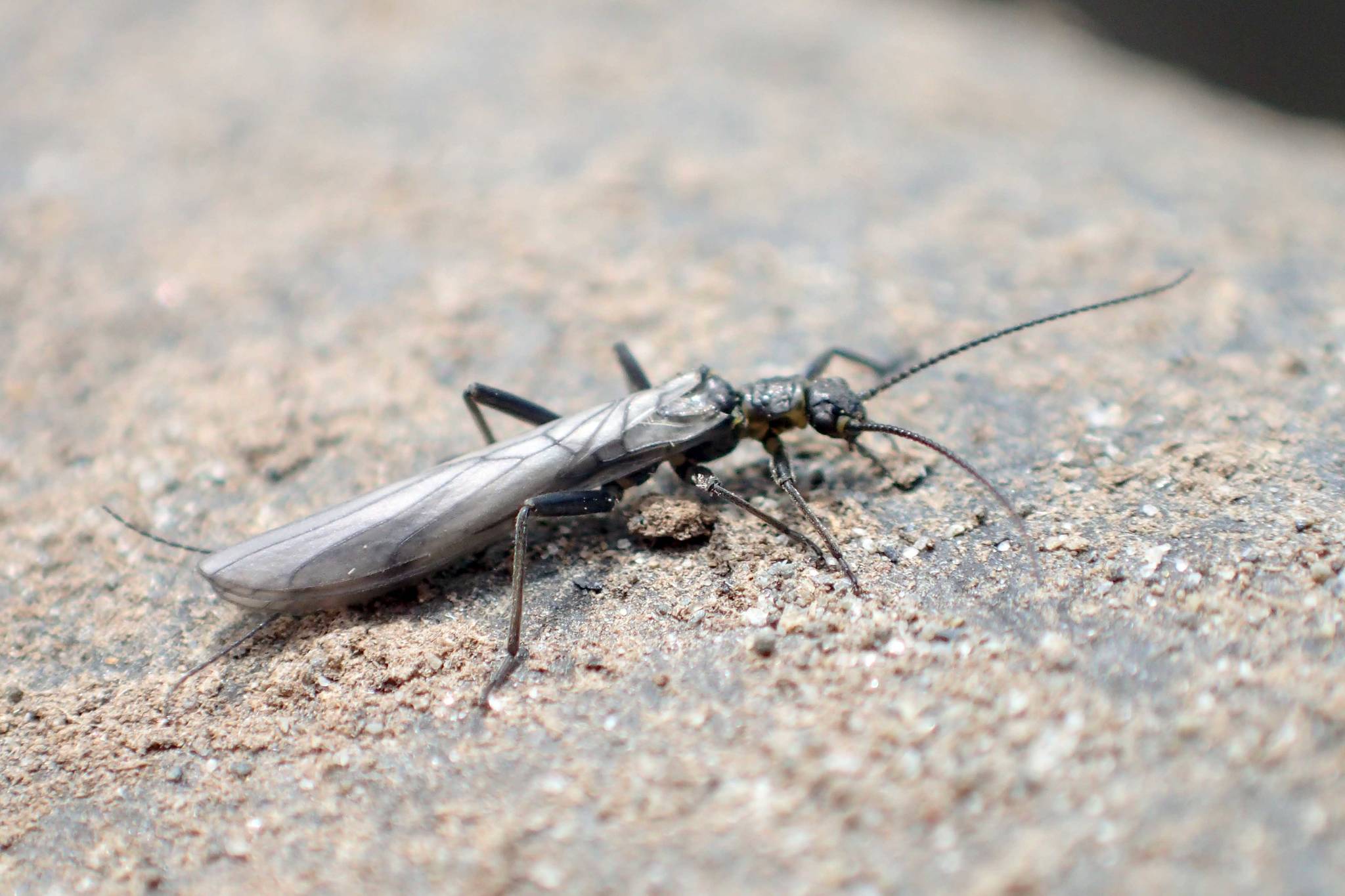If you spend any time near the Kenai River in Soldotna from March to May you may have noticed elongate, roughly one-third-inch long, dark stoneflies emerging from the river. These are winter stoneflies, also called snowflies.
Winter stoneflies are so named because they are among the earliest insects to emerge from cold streams, often appearing on ice and snow on the river before the ice breaks up. Their dark pigment helps them warm up on cold days by absorbing sunlight. In our area they continue to emerge well into May.
If you walk down to the water’s edge and do not see stoneflies, be still for a little while. You will notice more if you stop for a moment. If this does not work, try flipping over a few stones just above the water’s edge.
Stoneflies, which are not true flies, can be recognized by their wings that fold flat over their backs and their two tails. In contrast, mayflies, another group of winged aquatic insects, hold their wings vertically and have three tails.
Several species of winter stoneflies can be found on the Kenai Peninsula, but the species I have been seeing in the Kenai River at Soldotna and in the lower Kasilof River is the Columbian snowfly, Utacapnia columbiana. It has also been collected at Deep Creek and likely lives in many of the colder streams on the Kenai Peninsula.
Common in much of Alaska, the Columbian snowfly ranges east to Alberta and south as far as Montana. In the southern parts of its range this species is rare, living only in cold mountain streams.
The life history of our Columbian snowfly has not been studied, but it likely has a one-year life cycle as with other winter stoneflies that we know a little more about.
After the adults lay eggs and die, the eggs hatch and the nymphs grow through the summer and fall, maturing and hatching again as adults in late winter to spring. In this one-year life cycle the entire population is synchronized, all of them at close to the same stage of life at any time.
Fly fishermen, who tend to be observant of goings-on in the rivers, have observed that trout overwintering in streams where snowflies occur will cue in on hatches of winter stoneflies during a time of year when most other insects are not available.
People do tie and have had success with snowfly flies when the insects are hatching, especially on warm, sunny afternoons in the late winter to spring when trout may begin to be more active. Fly patterns based on the winter stonefly nymphs can also be effective during winter.
Columbian snowfly nymphs appear to be one of the more abundant invertebrates found under rocks in shallow water in the Kenai River. Interestingly, despite being one of the most common aquatic insects in our area, no one has investigated the biology of this species.
Based on what we know about other species of winter snowflies, we can make a good educated guess that Columbian snowfly nymphs shred and consume dead leaves and other decaying plant material in the Kenai River.
We can also guess that small fish feed on the nymphs. We know that winter stoneflies can be an important food item for young coho salmon at certain places and times of year. King salmon, which generally spend their first year of life in the river, likely eat at least some winter stoneflies.
Adult stoneflies generally do not eat at all. Their only purpose during their short existence as winged adults is to mate and disperse. This may seem like a futile existence, but for the situation of an aquatic insect like our winter stoneflies this role is of vital importance.
From the perspective of tiny aquatic insects, they live in an isolated suitable habitat surrounded by a vast expanse of inhospitable dry land. If the pond or stream in which they live dries up or becomes less suitable for any reason, they need to get to an appropriate water body.
For aquatic insects in flowing streams like the Kenai, at least some adults must fly upstream to make up for drift of the nymphs downstream throughout their development. This need for dispersal is why we see many winter stoneflies far from streams on vegetation, on buildings and caught in spider webs.
These adults will die without having reached a new stretch of stream, serving only as food for birds and spiders, but if just a small proportion of stoneflies make it upstream or to new streams, then this cost is worth it.
Given the abundance of Columbian snowflies and the importance of fish and fishing in our area, I was surprised to find that so little is known about these conspicuous insects and their place in the Kenai River system. I would like to know more about them, specifically what the stoneflies eat and who eats them.
Matt Bowser serves as Entomologist at Kenai National Wildlife Refuge. Find more Refuge Notebook articles (1999–present) at https://www.fws.gov/refuge/


